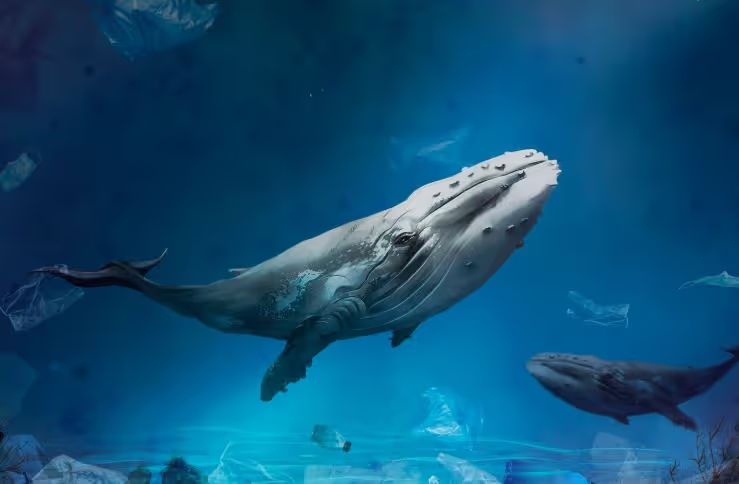Stay informed with our newsletter.
.webp)

.webp)

Deep-sea mining poses a serious threat to marine life, particularly to sperm whales, whose complex vocalizations are essential for communication and navigation. The intense noise generated by mining equipment in the ocean’s depths could interfere with these whales' ability to "sing," potentially silencing them in key habitats. As industrial interest in extracting valuable minerals from the seafloor grows, scientists and conservationists warn of the significant and possibly irreversible impact on these intelligent, deep-diving mammals.

Recent studies indicate that deep-sea mining in a remote region of the Pacific Ocean could pose serious risks to marine animals, including whales and dolphins. This activity is planned for the Clarion Clipperton Zone (CCZ), an expansive area of the Eastern Pacific characterized by deep waters and underwater mountains.
A Canadian company, The Metals Company, aims to investigate parts of this zone for valuable mineral deposits known as polymetallic nodules. Two new scientific investigations revealed the presence of whales and dolphins in the CCZ, including the endangered sperm whale, raising alarms about potential harm to numerous ocean species.
Dr. Kirsten Young of the University of Exeter emphasized that these deep-sea habitats are still largely uncharted, located far offshore and in extremely deep regions. She noted that many creatures living in these areas, particularly those on the ocean floor, have slow life cycles and can live for extended periods.
Given the nature of these ecosystems, it's extremely difficult to foresee how mining could affect them, which is why there's an urgent need for further assessment of the associated risks. Dr. Young explained that underwater noise generated by mining operations could travel vast distances possibly hundreds of kilometers through sound channels in the ocean.
One of the papers examined how species in the CCZ respond to noise, showing that research has only covered about a third of the animal groups in that region. Fish that depend on sound to communicate are especially at risk from noise pollution. Prolonged exposure to industrial noise may lead to widespread ecological disruptions, affecting essential behaviors in marine life.
The second investigation involved a whale and dolphin survey conducted from Greenpeace’s Arctic Sunrise vessel. During a 13-day expedition that combined visual and acoustic methods, researchers recorded 74 acoustic detections and observed six marine mammals.
Among those detected were sperm whales, Risso’s dolphins, common dolphins, and dozens of unidentified dolphin pods. Dr. Young warned that if mining activities proceed, these animals will be subjected to a variety of noise sources across the ocean depths.
Since many of these species are highly sensitive to specific sound frequencies, the ongoing noise could interfere with how they communicate and find food, possibly forcing them out of key areas. She added that the movement and effects of sediment clouds stirred up by mining remain poorly understood, yet could disrupt marine food chains.
Louisa Casson from Greenpeace International stressed that the documented presence of whales, including vulnerable species like the sperm whale, in regions targeted by The Metals Company should be a strong signal to halt this industry before it begins.
The findings were published in two peer-reviewed journals: one paper in Marine Pollution Bulletin focuses on noise-related risks, while the other in Frontiers in Marine Science highlights the presence of vulnerable whales and dolphins in the proposed mining zone.
For questions or comments write to contactus@bostonbrandmedia.com
Source: sciencedaily
